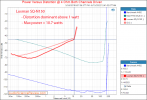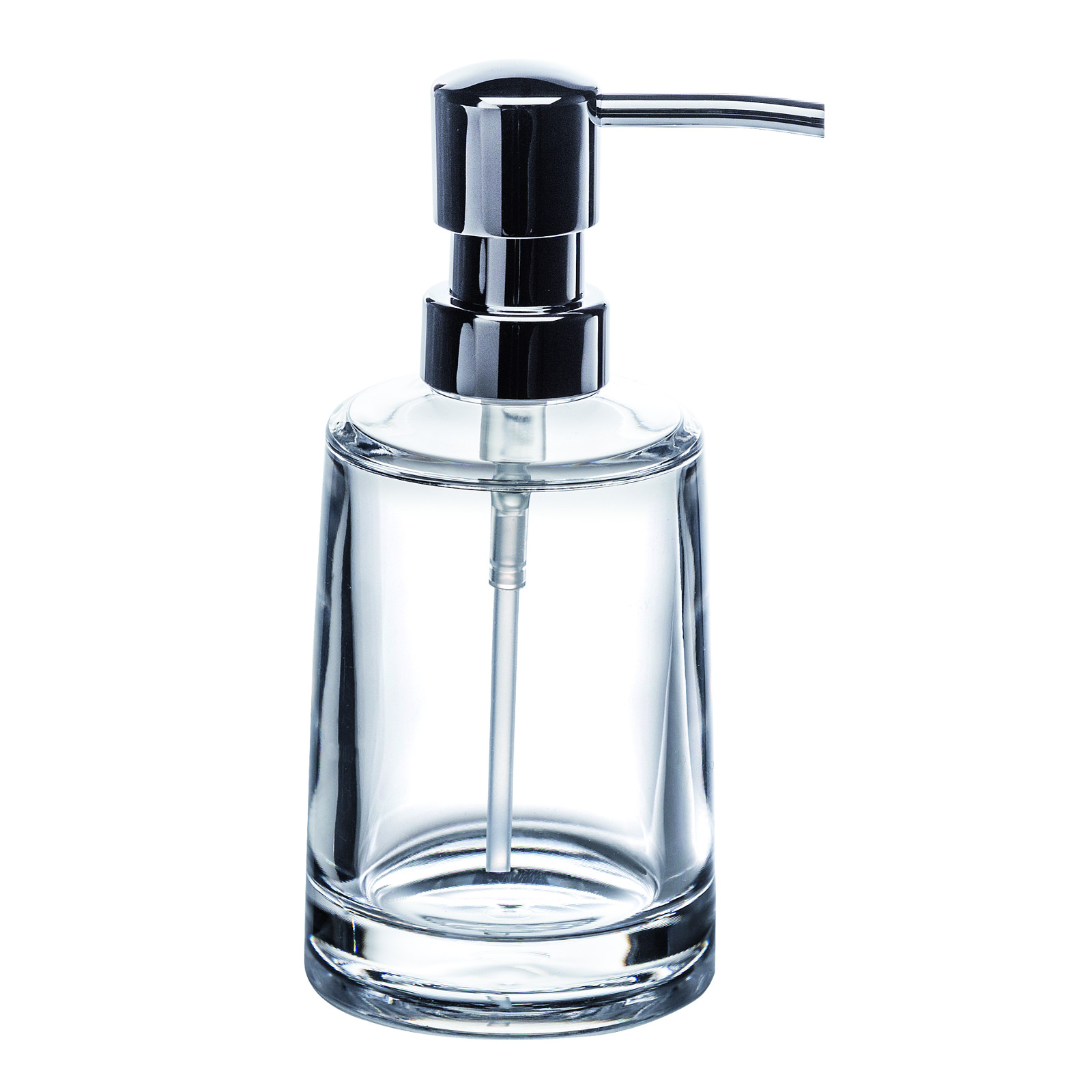This is a review and detailed measurements of the Luxman SQ-N150 hybrid integrated amplifier with phono stage. It is on kind loan from a member and costs US $3,295.

Can you say pretty? I knew you could! Love the elegant front panel with VU meter. Nice set of balance and tone controls are provided as well:
Love the elegant front panel with VU meter. Nice set of balance and tone controls are provided as well:

As you can see, power amplification is provided through ECC83 triode drivers going to EL84 power tubes. Amplifier is conservatively designed and is rate at just 10+10 watts into 6 ohms. I like the look without the cage but here it is with:

Not much exciting in the back other than modern, beefy speaker terminals than that of vintage tube amplifiers:

The package is smaller than one imagines but weighs a hefty 27 pounds. Notice the AC terminal doesn't have earth ground and unit is double insulated. In testing I found no effect from earthing the unit or not.
Front-end and pre-amps are solid state:

Luxman SQ-N150 Amplifier Measurements
When I picked 5 watts as my standard for measuring amplifiers, it was usually a fraction of the amplifier power but here it is nearly half the available power! So relatively speaker, distortion plays a much strong role than it would otherwise:

The high second and third harmonics set the stage as far as SINAD (due to push-pull design) but I wish there was not so much power supply noise. Sadly the amplifier takes up the ranking of second worst amplifier I have ever measured as far as distortion+noise:

Those power supply spikes set the lower bound for dynamic range:

It is not too bad but you likely will use very sensitive speakers with this low power amplifier so the numbers may manifest themselves more than they usually do.
Frequency response is extended but shows a kink indicating some kind of filter:

Crosstalk does not follow the usual curve indicating some sort of resistive (?) element between the two channels:

Normally the issue is capacitive which causes the two reference lines you see.
Multitone which is supposed to resemble "music" with its 32 tone, shows strong level of "grass" (intermodulation distortion):

Hard to make a case that you are hearing more detail when so much is masked at this power level.
I don't have a 6 ohm load so used my usual 4 and 8 ohm loads for power testing:



Edit: forgot to post the different frequency sweeps:

Luxman SQ-N150 Phono Stage Measurements
The amplifier noise and distortion dwarfs the phono stage so I only checked its frequency response:

So very good on this critical measurement.
Luxman SQ-N150 Headphone Measurements
For same reason as above, I just made a power measurement:

Seems usable from power availability point of view but noise and distortion are quite high. Company specifies 16 ohm output impedance and wisely recommends against using low impedance headphones for good reason:

The headphone amplifier is simply connected to the amplifier output using the aforementioned resistor which eats up all the power. It will also change the frequency response of your headphone if it is not flat. So best to be avoided.
Luxman SQ-N150 Listening Tests
My lab speaker is an infinity R253 which has a sensitivity of 87 dB. I connected it to the SQ-N150 and started to listen. I had to immediately acknowledge the lack of power as the volume control not only maxed out but there was so much distortion as to cause crackling noise. I backed off to moderate listening level and the sound was OK but I noticed boominess in the lows as if you have more room modes than you do. To confirm, I switched to Topping PA5 amplifier on my bench and boominess was gone. Likely the harmonic distortion of the amplifier is hitting on more room modes causing extra bass/boominess. I can see if your speakers/setup lacks bass that you experience a bit more of it.
The volume control had to be kept below 12:00 o'clock. By 1:00 o'clock distortion would start to set in and sound would start to get grungy and rough. Past 2:00 o'clock it would be rather obvious and beyond that, unusable. There was usable volume with me sitting 5 feet from the single speaker. With two speakers you could double that but it is still not enough power for me with this speaker. If an audio reviewer can't hear this level of distortion, they should give up testing audio gear. Sadly none of the reviews I read made a remark about the distortion.
It is the classic case of paying a lot more and getting a lot less fidelity and enjoyment.
Conclusions
The high level picture here is very clear: wonderful looking, and presumably well built amplifier. The problem is using tube technology and producing so little power. I see no advantage to it, euphonically or otherwise. But it is possible for some people the bass impact is a positive. But at what cost? So much spent with so little dynamic capability due to lack of power.
Needless to say I can't recommend the Luxman SQ-N150.
------------
As always, questions, comments, recommendations, etc. are welcome.
Any donations are much appreciated using: https://www.audiosciencereview.com/forum/index.php?threads/how-to-support-audio-science-review.8150/
Can you say pretty? I knew you could!
As you can see, power amplification is provided through ECC83 triode drivers going to EL84 power tubes. Amplifier is conservatively designed and is rate at just 10+10 watts into 6 ohms. I like the look without the cage but here it is with:
Not much exciting in the back other than modern, beefy speaker terminals than that of vintage tube amplifiers:
The package is smaller than one imagines but weighs a hefty 27 pounds. Notice the AC terminal doesn't have earth ground and unit is double insulated. In testing I found no effect from earthing the unit or not.
Front-end and pre-amps are solid state:
Luxman SQ-N150 Amplifier Measurements
When I picked 5 watts as my standard for measuring amplifiers, it was usually a fraction of the amplifier power but here it is nearly half the available power! So relatively speaker, distortion plays a much strong role than it would otherwise:
The high second and third harmonics set the stage as far as SINAD (due to push-pull design) but I wish there was not so much power supply noise. Sadly the amplifier takes up the ranking of second worst amplifier I have ever measured as far as distortion+noise:
Those power supply spikes set the lower bound for dynamic range:
It is not too bad but you likely will use very sensitive speakers with this low power amplifier so the numbers may manifest themselves more than they usually do.
Frequency response is extended but shows a kink indicating some kind of filter:
Crosstalk does not follow the usual curve indicating some sort of resistive (?) element between the two channels:
Normally the issue is capacitive which causes the two reference lines you see.
Multitone which is supposed to resemble "music" with its 32 tone, shows strong level of "grass" (intermodulation distortion):
Hard to make a case that you are hearing more detail when so much is masked at this power level.
I don't have a 6 ohm load so used my usual 4 and 8 ohm loads for power testing:
Edit: forgot to post the different frequency sweeps:
Luxman SQ-N150 Phono Stage Measurements
The amplifier noise and distortion dwarfs the phono stage so I only checked its frequency response:
So very good on this critical measurement.
Luxman SQ-N150 Headphone Measurements
For same reason as above, I just made a power measurement:
Seems usable from power availability point of view but noise and distortion are quite high. Company specifies 16 ohm output impedance and wisely recommends against using low impedance headphones for good reason:
The headphone amplifier is simply connected to the amplifier output using the aforementioned resistor which eats up all the power. It will also change the frequency response of your headphone if it is not flat. So best to be avoided.
Luxman SQ-N150 Listening Tests
My lab speaker is an infinity R253 which has a sensitivity of 87 dB. I connected it to the SQ-N150 and started to listen. I had to immediately acknowledge the lack of power as the volume control not only maxed out but there was so much distortion as to cause crackling noise. I backed off to moderate listening level and the sound was OK but I noticed boominess in the lows as if you have more room modes than you do. To confirm, I switched to Topping PA5 amplifier on my bench and boominess was gone. Likely the harmonic distortion of the amplifier is hitting on more room modes causing extra bass/boominess. I can see if your speakers/setup lacks bass that you experience a bit more of it.
The volume control had to be kept below 12:00 o'clock. By 1:00 o'clock distortion would start to set in and sound would start to get grungy and rough. Past 2:00 o'clock it would be rather obvious and beyond that, unusable. There was usable volume with me sitting 5 feet from the single speaker. With two speakers you could double that but it is still not enough power for me with this speaker. If an audio reviewer can't hear this level of distortion, they should give up testing audio gear. Sadly none of the reviews I read made a remark about the distortion.
It is the classic case of paying a lot more and getting a lot less fidelity and enjoyment.
Conclusions
The high level picture here is very clear: wonderful looking, and presumably well built amplifier. The problem is using tube technology and producing so little power. I see no advantage to it, euphonically or otherwise. But it is possible for some people the bass impact is a positive. But at what cost? So much spent with so little dynamic capability due to lack of power.
Needless to say I can't recommend the Luxman SQ-N150.
------------
As always, questions, comments, recommendations, etc. are welcome.
Any donations are much appreciated using: https://www.audiosciencereview.com/forum/index.php?threads/how-to-support-audio-science-review.8150/
Attachments
Last edited:


